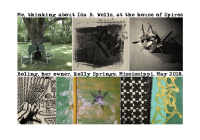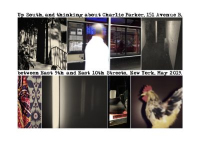.
.

.
“Me,. Thinking about Rev. L. O. Taylor” .2018
.
From the series Pastoral Scenes of the Gallant South
Archival inkjet print, 4½ x 6½ inches, framed to 14 x 14 inches
.
.
___
.
.
As Judy Peiser notes, “Photographer, filmmaker, and oral historian Rev. L.O. Taylor (1899 – 1977) single-handedly documented the African American community in Memphis, Tennessee from the 1920s through the 1960s. Capturing what is rarely seen in public documents from those decades, Rev. Taylor’s work shows African American life in the South immediately preceding the struggle for Civil Rights.” Taylor’s work is archived at the Center for Southern Folklore, 119 South Main Street, Memphis, Tennessee, co-founded by the inimitable Peiser.
Regarding the cartoon: First formed in 1954 following .Brown. vs. Board of Education, the. Citizens’. Councils. (also referred to as White .Citizens’ .Councils) were an associated network of white supremacist, far-right organizations, concentrated in the South. .Today, the Council of Conservative Citizens continues the agenda of the original councils.
Other subjects in this series, all of which will be published on Jerry Jazz Musician, include the legendary blues artist Robert Johnson (click here to view), .Harriet and Thomas Truesdell, abolitionists and conductors on the Underground Railroad (click here to view), the educator and investigative journalist Ida B. Wells (click here to view), civil rights activist Homer Plessy, (click here to view) and Booker T. Washington. The artist also takes the series “up South” to Brooklyn, focusing on the Truesdells, and the contemporary African-American photographer Nona Faustine. He also pays homage to Charlie Parker’s New York in “Thinking About Charlie Parker” (click here to view).
The series comes out of a road trip through the South that the artist took in 2018. The pieces can be interpreted as a form of self-portrait, of the artist paying homage in his own way to an individual, and of the place which that person occupied and continues to occupy. This is the South that the photographer Sally Mann describes as “a place extravagant in its beauty, reckless in its fecundity, terrible in its indifference, and dark with memories.”
Ingham’s photo-narratives explore invented spaces, alternative histories, and visual fictions, sometimes incorporating altered, appropriated images. In some pieces, images alone form a narrative; a horizontal row of five to seven photographs creates a “cinematic” form. In others, words and images create a dynamic interplay, and in the fotonovela series, the photographs move closer to a traditional illustrative function for the text. None of these interchanges between image and text are straightforward, however. Placing verbal and visual elements together immediately creates a tension for the viewer that they want to find/interpret in order to “explain” the narrative of the piece; thus, the artist expects viewers to find a unique narrative of their own in the work.
.
“Thinking About Robert Johnson”
.
.
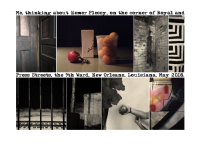
.
Click here to view “Thinking About Charlie Parker”
.
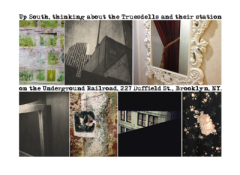
Click here to view “Thinking About the Truesdells”
.
.
___
.
.
photo by Jacqueline Ramirez
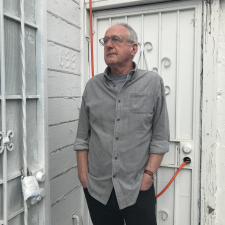
.
Born and educated in England, Charles Ingham moved to California in 1982. He has always been interested in hybrid forms and the intersection of literature and the visual arts, his photography often seeking to transgress the traditional boundaries separating the verbal and the visual.
Ingham lives in San Diego and shows his work at Distinction Gallery in Escondido. His work may also be found at his website: charlesingham.com
.
.
.





